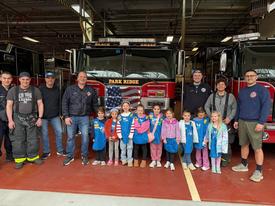|

| 2025 Incidents |
| Jan | 21 |
| Feb | 22 |
| Mar | 25 |
| Apr | 13 |
| May | 3 |
| Jun | 0 |
| Jul | 0 |
| Aug | 0 |
| Sep | 0 |
| Oct | 0 |
| Nov | 0 |
| Dec | 0 |
| Total | 84 |
| 2024 Incidents |
| Jan | 10 |
| Feb | 22 |
| Mar | 19 |
| Apr | 16 |
| May | 28 |
| Jun | 25 |
| Jul | 30 |
| Aug | 25 |
| Sep | 18 |
| Oct | 25 |
| Nov | 25 |
| Dec | 19 |
| Total | 262 |
| 2023 Incidents |
| Jan | 20 |
| Feb | 19 |
| Mar | 15 |
| Apr | 19 |
| May | 21 |
| Jun | 28 |
| Jul | 16 |
| Aug | 16 |
| Sep | 29 |
| Oct | 30 |
| Nov | 29 |
| Dec | 27 |
| Total | 269 |
| 2022 Incidents |
| Jan | 22 |
| Feb | 16 |
| Mar | 18 |
| Apr | 10 |
| May | 31 |
| Jun | 20 |
| Jul | 21 |
| Aug | 17 |
| Sep | 11 |
| Oct | 14 |
| Nov | 17 |
| Dec | 22 |
| Total | 219 |
| Web Counters |
Website Visitors
Since
January 2, 2025
|
Visitors Today
May 09, 2025
|
|
|
|
|
Welcome to the Official Website for Park Ridge Volunteer Fire Department
.jpg)
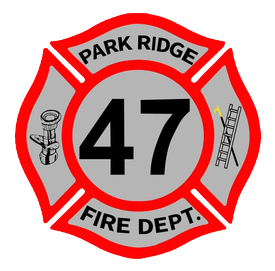
|
Welcome to the Park Ridge Fire Department Website
Park Ridge Volunteer Fire Department, December 23
The Park Ridge Volunteer Fire Department was founded in 1898 to provide fire protection services to the Borough of Park Ridge. Over the years, we have expanded our capabilities to meet the evolving needs of our community. Today, we not only respond to fires but also handle vehicle extrications, elevator rescues, and a variety of other emergencies throughout the Borough.
Our department is proudly ... (Full Story & Photos)
|

|
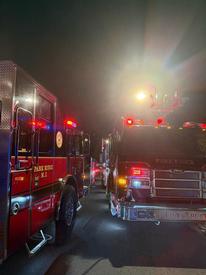
|
🚨 Incident Report: Activated Fire Alarm 🚨
Date: March 23, 2025 Time: Approx
Park Ridge Volunteer Fire Department, March 24
1:30 AM
The Park Ridge Fire Department responded to an activated fire alarm at a residence on North Fifth Street. Upon arrival, crews found an audible alarm and were unable to make contact with the homeowners. After completing an entire check of the exterior of the house, and believing that the residents were home, members “respectfully”forced entry through a window to investigate the situation ... (Full Story & Photos)
|

|
Congratulations to Deputy Chief Mauro and Firefighter Napolitano
Park Ridge Volunteer Fire Department, February 26
Congratulations to Deputy Chief Peter Mauro on being promoted to Captain of the Park Ridge Police Department Deputy Chief Mauro's service to the Borough of Park Ridge spans over forty years, beginning as a Junior Firefighter, serving as Chief of the Fire Department for several terms, and being a member of the Park Ridge Police Department for over twenty years.
Additionally, Firefighter Randy Napolitano ... (Full Story & Photos)
|
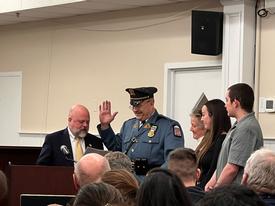
|

|
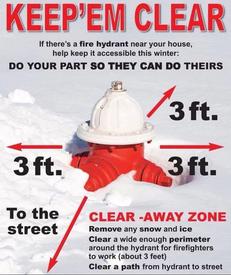
|
Just a reminder to shovel out the fire hydrants near your house!
Park Ridge Volunteer Fire Department, January 21
....
It is not the intention of this Ordinance to penalize anyone, however, a clearly accessible fire hydrant can save us valuable minutes when responding to fire emergencies.
Park Ridge Borough Ordinance 86-4.1 - states that:
A. The owner, tenant or occupant of lands abutting any fire hydrant shall maintain the area within a five-foot perimeter of the center of the hydrant free of all ice and ... (Full Story & Photos)
|

|
Santa's Arrival at Depot Square – A Park Ridge Tradition
Park Ridge Volunteer Fire Department, December 23
Thanks to the help of Santa's elves, the stockings are packed and ready for Santa's arrival at Depot Square on December 24 at 6:00 PM!
Join us as we welcome Santa in one of the Park Ridge Fire Department’s most cherished and long-standing holiday traditions. The Santa escort to Depot Square, led by our department, dates back many decades and is a highlight of the season for our community.
Bring ... (Full Story & Photos)
|

|

|
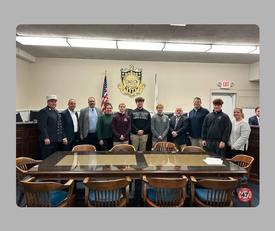
|
Park Ridge Fire Department Welcomes Four New Members
Park Ridge Fire Department, December 11
The Park Ridge Fire Department is pleased to announce the addition of four new members to its dedicated team of professionals. During Tuesday night's ceremony, the department officially welcomed Nick Schwartz, Jackson Shannon, and Nathan Shannon as Fire Reserve Firefighters. In addition, Fire Commissioner John Ferguson transitioned into a new role as a regular firefighter, reinforcing his commitment ... (Full Story & Photos)
|
Your feedback is important to us! Feel free to sign the guestbook.
|
|
|

.jpg)

